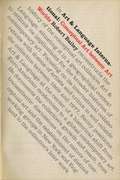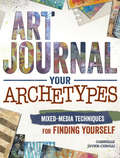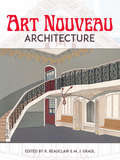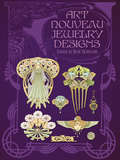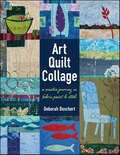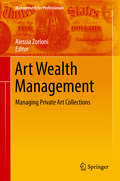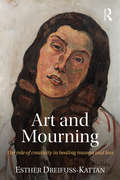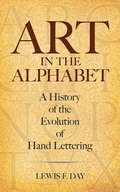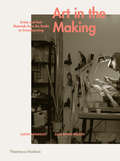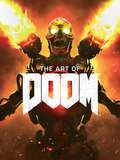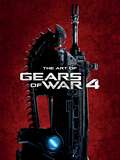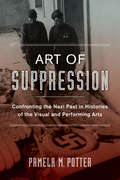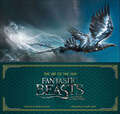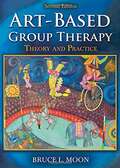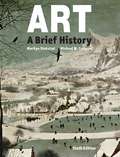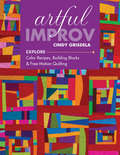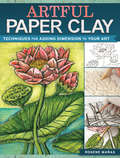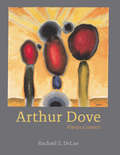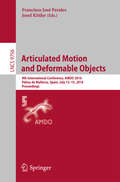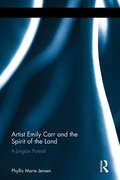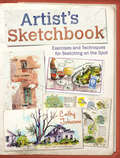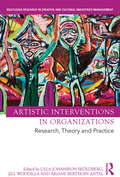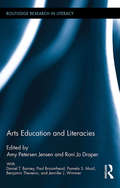- Table View
- List View
Art & Language International: Conceptual Art between Art Worlds
by Robert BaileyIn Art & Language International Robert Bailey reconstructs the history of the conceptual art collective Art & Language, situating it in a geographical context to rethink its implications for the broader histories of contemporary art. Focusing on its international collaborations with dozens of artists and critics in and outside the collective between 1969 and 1977, Bailey positions Art & Language at the center of a historical shift from Euro-American modernism to a global contemporary art. He documents the collective's growth and reach, from transatlantic discussions on the nature of conceptual art and the establishment of distinct working groups in New York and England to the collective's later work in Australia, New Zealand, and Yugoslavia. Bailey also details its publications, associations with political organizations, and the internal power struggles that precipitated its breakdown. Analyzing a wide range of artworks, texts, music, and films, he reveals how Art & Language navigated between art worlds to shape the international profile of conceptual art. Above all, Bailey underscores how the group's rigorous and interdisciplinary work provides a gateway to understanding how conceptual art operates as a mode of thinking that exceeds the visual to shape the philosophical, historical, and political.
Art Journal Your Archetypes: Mixed Media Techniques for Finding Yourself
by Gabrielle Javier-CerulliIt's true, isn't it? You have a burning desire to express yourself. But to be successful, confident and happy, you need to know yourself, your true self. That's where archetypes come in. An archetype is a symbolic representation of the repeated patterns of behavior that make you who you are, the driving forces behind your being. Maybe you're a Rebel or a Seeker? Maybe you are both. Or are you a Visionary? How about a Student? The better you know yourself, the stronger, more resonant and more authentic your art. And where else to practice expressing your newly discovered self than in an art journal--a place where you are free to create with no rules, no wrongs. Art journaling is a colorful, non-critical way to explore your archetypes. In this unique book, you will learn processes for discovering your core archetypes and using that knowledge to create highly personal visual expressions, all the while embracing the personal revelations and creative breakthroughs that result.A fun 33-question quiz will help you discover and embrace your guiding archetypes.Find out how 11 professional artists draw on their archetypes as inspiration for their art journal pages.Follow along with 26 step-by-step demonstrations to learn how to use altered magazine images, layered stencils, Gelli Plate printing and other awesome mixed-media art techniques to enhance your art journal pages.No matter what your experience level, you will learn how to use your guiding archetypes as inspiration. Whatever your motivation for opening this book, you will discover a fun, creative path to gaining confidence, happiness and clarity in every aspect of your life.
Art Nouveau Architecture
by R. Beauclair M. J. GradlPublished in Paris in 1902, these rare plates offer a unique source of details of the era's "modern" architecture. The 58 full-color images originally appeared in a short-lived periodical from the height of the Art Nouveau period. They provide an authentic source of information on how Art Nouveau influenced architectural design in the early twentieth century. Illustrations include windows, doorways, joists, railings, stairways, chimneys, ornamental woodwork, exterior decoration, elaborate ironwork, and much more. Additional plates depict interior and exterior views of these architectural elements in actual and planned buildings and rooms designed by architects of the period. Brief captions supply details for each plate. This treasury of rare illustrations and information represents a valuable resource for students of art history and the history of architecture as well as for architects and designers interested in Art Nouveau.
Art Nouveau Jewelry Designs
by Rene BeauclairAt the turn of the twentieth century, the Art Nouveau movement swept the world of decorative arts toward an excitingly modern direction. Inspired by both organic and geometric forms, the new trend abandoned historical styles in favor of flowing, natural forms accented by angular contours. Art Nouveau's curves and floral and animal motifs were particularly suited to adaptations in precious stones and rare metals. The elegant, royalty-free illustrations of this collection, reprinted in their original colors from a rare German edition, offer authentic representations of the craftsmanship and imaginative qualities involved in the creation of Art Nouveau jewelry.This sumptuous assortment presents more than 300 pendants, combs, rings, bracelets, brooches, buttons, clasps, and earrings. The exquisitely detailed jewelry and accessories feature lilies, morning glories, and other floral motifs as well as butterflies, seahorses, birds, and a host of fanciful creatures. René Beauclair, a renowned Art Nouveau designer, includes his own works as well as those of André Petitjean, Jules Armbruster, Paul Liénard, Emile Jammes, and Paul F. Follot. The striking, royalty-free illustrations are readily adaptable to any design use and will serve as a source of inspiration for jewelry designers and crafters of all kinds.
Art Quilt Collage: A Creative Journey in Fabric, Paint & Stitch
by Deborah BoschertHow to get from "start" to "art" Make treasured art quilts from bits of cloth, stitched motifs, and painted details. Dip your toes into the world of art quilting with mixed-media techniques, practice exercises, checklists, and work-along projects presented using 8 design guides. This visual, step-by-step guide will help you unlock your own artistic vision as you quilt in a series, finish small art pieces, and incorporate meaningful symbols into your work. • Tap into your creative muse! Art quilt inspiration, techniques, and checklists presented in 8 easy-to-use design guides • Uncomplicated, visual guide to fabric collage with practice pieces to help you gain expertise • Tell your own artistic story with colors, materials, and beloved symbols
Art Wealth Management: Managing Private Art Collections (Management for Professionals #0)
by Alessia ZorloniThis book offers an overview of how to manage private art collections, providing essential insights on art wealth management, art investment, art governance, and succession planning for art assets. It offers practical recommendations on sound art collection governance, but also examines the background of art markets and price building, including the influence of fashion and trends. Throughout history, art patronage has played an important role in the wealth of ultra-high-net-worth families and led to private museums funded by philanthropist collectors in order to celebrate their own tastes and leave a lasting legacy. Today, as a result of the growth of art investing by a new generation of wealthy collectors, not only artists but also wealthy families, sophisticated investors and their close advisors now face a more complex set of financial and managerial needs. As such, the contributions in this book will be of interest to collecting families, family offices, and professional advisors seeking to integrate art into their overall wealth management strategy, and to scholars in the fields of cultural economics, art dealers, curators, and art lovers.
Art and Mourning: The role of creativity in healing trauma and loss
by Esther Dreifuss-KattanArt and Mourning explores the relationship between creativity and the work of self-mourning in the lives of 20th century artists and thinkers. The role of artistic and creative endeavours is well-known within psychoanalytic circles in helping to heal in the face of personal loss, trauma, and mourning. In this book, Esther Dreifuss-Kattan, a psychoanalyst, art therapist and artist - analyses the work of major modernist and contemporary artists and thinkers through a psychoanalytic lens. In coming to terms with their own mortality, figures like Albert Einstein, Louise Bourgeois, Paul Klee, Eva Hesse and others were able to access previously unknown reserves of creative energy in their late works, as well as a new healing experience of time outside of the continuous temporality of everyday life. Dreifuss-Kattan explores what we can learn about using the creative process to face and work through traumatic and painful experiences of loss. Art and Mourning will inspire psychoanalysts and psychotherapists to understand the power of artistic expression in transforming loss and traumas into perseverance, survival and gain. Art and Mourning offers a new perspective on trauma and will appeal to psychoanalysts and psychotherapists, psychologists, clinical social workers and mental health workers, as well as artists and art historians.
Art and the Church: Ecclesiastical Encounters with Contemporary Art
by Jonathan Koestle-CateA vibrant critical exchange between contemporary art and Christianity is being increasingly prompted by an expanding programme of art installations and commissions for ecclesiastical spaces. Rather than 'religious art' reflecting Christian ideology, current practices frequently initiate projects that question the values and traditions of the host space, or present objects and events that challenge its visual conventions. In the light of these developments, this book asks what conditions are favourable to enhancing and expanding the possibilities of church-based art, and how can these conditions be addressed? What viable language or strategies can be formulated to understand and analyse art's role within the church? Focusing on concepts drawn from anthropology, comparative religion, art theory, theology and philosophy, this book formulates a lexicon of terms built around the notion of encounter in order to review the effective uses and experience of contemporary art in churches. The author concludes with the prognosis that art for the church has reached a critical and decisive phase in its history, testing the assumption that contemporary art should be a taken-for-granted element of modern church life. Art and the Church: A Fractious Embrace uniquely combines conceptual analysis, critical case studies and practical application in a rigorous and inventive manner, dealing specifically with contemporary art of the past twenty-five years, and the most recent developments in the church's policies for the arts.
Art in the Alphabet: A History of the Evolution of Hand Lettering
by Lewis F. DayThis grand compilation presents more than 250 depictions of the alphabet's changing forms, from handsome Roman letters cut in marble and delicate English courthand to sixteenth-century Greek initials and modern styles inspired by Gothic, Japanese, and other forms of writing. In addition to its intriguing survey of historical trends, this book also offers richly illustrated reflections on the artistic ability involved in rendering the alphabet. An introductory essay traces the evolution of the English alphabet, followed by a wealth of old alphabets arranged in order of date. Among the selection of modern alphabets are samples that offer evidence of how the surface — wood, stone, leather, mosaic — and the writing instrument — chisel, needle, brush, stylus, pen — can affect the character of the lettering. An assortment of ampersands and numerals concludes the volume, along with an index of illustrations arranged by artist, country, material and process, and style. Artists, graphic artists, historians, and anyone with an interest in calligraphy will appreciate the historic sweep and artistic range of this treasury of lettering.
Art in the Making: Artists and their Materials from the Studio to Crowdsourcing
by Julia Bryan-Wilson Glenn AdamsonThe first book to address the significance of the materials and methods used to make contemporary artworks Today, artists are able to create using multiple methods of production--from painting to digital technologies to crowdsourcing--some of which would have been unheard of just a few decades ago. Yet, even as our means of making art become more extraordinary and diverse, they are almost never addressed in their specificity. While critics and viewers tend to focus on the finished products we see in museums and galleries, authors Glenn Adamson and Julia Bryan-Wilson argue that the materials and processes behind the scenes used to make artworks are also vital to current considerations of authorship and to understanding the economic and social contexts from which art emerges. This wide-ranging exploration of different methods and media in art since the 1950s includes nine chapters that focus on individual processes of making: Painting, Woodworking, Building, Performing, Tooling Up, Cashing In, Fabricating, Digitizing, and Crowdsourcing. Detailed examples are interwoven with the discussion, including visuals that reveal the intricacies of techniques and materials. Artists featured include Ai Weiwei, Alice Aycock, Isa Genzken, Los Carpinteros, Paul Pfeiffer, Doris Salcedo, Santiago Sierra, and Rachel Whiteread.
Art of Doom
by Bethesda GamesFrom id Software, the studio that pioneered the first-person-shooter genre and coined the multiplayer term deathmatch, comes a massive art tome from the highly anticipated next installment of DOOM!From the immense UAC facilities on Mars to the depths of hell, uncover never-before-seen sketches and concept art from DOOM. The book also features an exclusive look at the development of the relentless demons of hell, devastating, over-the-top weapons, and the iconic DOOM marine—all accompanied by commentary from the developers themselves. The Art of DOOM is indispensable for fans of video games, visceral first-person-shooter combat, and pulse-pounding action!
Art of Gears of War 4
by VariousThe Gears of War series has revolutionized third-person shooter action with its gorgeous environments, iconic characters, and brutal action. Now to commemorate the continuation of the Gears epic, Dark Horse Books and The Coalition present The Art of Gears of War 4. Featuring hundreds of individual pieces of art, finished renders, and commentary from the game&’s creators, this gorgeous volume is a must-have item for veteran Gears and rookies alike! * The essential companion to Gears of War 4! * Featuring exclusive commentary from the game&’s creators! * Gears of War 4 is the long awaited sequel to the iconic videogame saga!
Art of Suppression: Confronting the Nazi Past in Histories of the Visual and Performing Arts (Weimar and Now: German Cultural Criticism)
by Pamela M. PotterThis provocative study asks why we have held on to vivid images of the Nazis’ total control of the visual and performing arts, even though research has shown that many artists and their works thrived under Hitler. To answer this question, Pamela M. Potter investigates how historians since 1945 have written about music, art, architecture, theater, film, and dance in Nazi Germany and how their accounts have been colored by politics of the Cold War, the fall of communism, and the wish to preserve the idea that true art and politics cannot mix. Potter maintains that although the persecution of Jewish artists and other "enemies of the state" was a high priority for the Third Reich, removing them from German cultural life did not eradicate their artistic legacies. Art of Suppression examines the cultural histories of Nazi Germany to help us understand how the circumstances of exile, the Allied occupation, the Cold War, and the complex meanings of modernism have sustained a distorted and problematic characterization of cultural life during the Third Reich.
Art of the Film: Fantastic Beasts and Where to Find Them
by Dermot PowerAn in-depth, fully illustrated look at the art and artists behind the awe-inspiring world of J.K. Rowling’s Fantastic Beasts and Where to Find Them.Led by Academy Award®–winning production designer Stuart Craig, a number of art departments were responsible for creating the unforgettable characters, locations and beasts from the 2016 fantasy film that expanded on the Wizarding World of Harry Potter. In this beautifully illustrated volume, Dermot Power—a concept artist on the film—takes you on a magical journey through a design process every bit as wonderful as that encountered by Newt Scamander: from the earliest gatherings of the artists, designers and filmmakers to the magical time of the film’s production.Bursting with hundreds of production paintings, concept sketches, storyboards, blueprints and matte paintings, and filled with unique insights about the filmmaking journey from Stuart Craig and the artists themselves, this superb book presents a visual feast for readers, and will welcome fans of Harry Potter films into the world of Fantastic Beasts and Where to Find Them.
Art-based Group Therapy: Theory And Practice
by Bruce L. MoonIn this second edition Moon provides essential principles regarding art-based therapy groups. The book is intended for art therapy students and practitioners, offering philosophic and practical information related to the use of art in a host of group therapy contexts.
Art: A Brief History
by Marilyn Stokstad Michael W. CothrenFor Art History Survey courses The most student-friendly, contextual, and inclusive art history survey text on the market Now in its sixth edition, Art: A Brief History continues to balance formal analysis with contextual art history in order to engage a diverse student audience. Authors Marilyn Stokstad and Michael Cothren, both scholars as well as teachers, share a common vision that survey courses should be filled with as much enjoyment as learning, and that they should foster an enthusiastic, as well as an educated, public for the visual arts. By treating the visual arts as one component of a vibrant cultural landscape (which also includes politics, religion, economics, and more), Art: A Brief History helps students recognize and appreciate the central role that art and architecture have played in human history.
Artful Improv: Explore Color Recipes, Building Blocks & Free-Motion Quilting
by Cindy Grisdela“Do away with patterns and embrace your creative spirit with this vibrant and fun book.” —Quilting Arts With simple design principles, you can create unique improvisational quilts. Without using patterns, learn five easy piecing techniques for your improvisational toolbox (including circles, blocks, and strips), and watch the art unfold before your eyes. Focus on color combos and negative space to discover your personal style—and then add dazzling texture with free-motion quilting.Also included is information on hanging finished art quilts without a sleeve, plus tried and true improv tips to encourage creative play.
Artful Paper Clay: Techniques for Adding Dimension to Your Art
by Rogene ManasCreate Beautiful Paintings With Dimension Forge a bold creative path by adding hand-sculpted elements to your two-dimensional work. Discover an entirely fresh and fun approach for creating fine art with paper clay, developed by artist and teacher Rogene Mañas. This all-new bas-relief art form combines air-drying clay, paint, collage and texture to build dimensional mixed-media works that pop right off the wall. The book is divided into four parts:Part 1: Working with Clay - Techniques and tips to begin working with clay in bas-relief, starting with the absolute basics. Includes 15 easy practice projects to work on cutting, shaping, sculpting and stamping.Part 2: Clay Work Projects - 5 full step-by-step clay-art project demos. Create your own art using Rogene's methods for composing, sculpting, placing and drying.Part 3: Finishing Techniques - Finish the 5 demonstrations from Part 2 with different painting, collage and mixed-media techniques.Part 4: Get Creative - Includes ideas for framing, practice patterns, creative exercises and additional three-dimensional art projects and gifts.Whether you're a seasoned sculptor or just starting out, Artful Paper Clay will teach you the skills necessary to craft complex and vivacious multi-dimensional masterpieces and paint them for gorgeous effect.
Arthur Dove: Always Connect
by Rachael Z. DelueArthur Dove, often credited as America's first abstract painter, created dynamic and evocative images inspired by his surroundings, from the farmland of upstate New York to the North Shore of Long Island. But his interests were not limited to nature. Challenging earlier accounts that view him as simply a landscape painter, Arthur Dove: Always Connect reveals for the first time the artist's intense engagement with language, the nature of social interaction, and scientific and technological advances. Rachael Z. DeLue rejects the traditional assumption that Dove can only be understood in terms of his nature paintings and association with photographer and gallerist Alfred Stieglitz and his circle. Instead, she uncovers deep and complex connections between Dove's work and his world, including avant-garde literature, popular music, meteorology, mathematics, aviation, and World War II. Arthur Dove also offers the first sustained account of Dove's Dadaesque multimedia projects and the first explorations of his animal imagery and the role of humor in his art. Beautifully illustrated with works from all periods of Dove's career, this book presents a new vision of one of America's most innovative and captivating artists--and reimagines how the story of modern art in the United States might be told.
Articulated Motion and Deformable Objects: 9th International Conference, AMDO 2016, Palma de Mallorca, Spain, July 13-15, 2016, Proceedings (Lecture Notes in Computer Science #9756)
by Josef Kittler Francisco José PeralesThis book constitutes the refereed proceedings of the 9th International Conference on Articulated Motion and Deformable Objects, AMDO 2016, held in Palma de Mallorca, Spain, in July 2016. The 20 papers presented were carefully reviewed and selected from 34 submissions. The conference dealt with the following topics: advanced computer graphics and immersive videogames; human modeling and animation; human motion analysis and tracking; 3D human reconstruction and recognition; multimodal user interaction and applications; ubiquitous and social computing; design tools; input technology; programming user interfaces; 3D medical deformable models and visualization; deep learning methods for computer vision and graphics; multibiometric.
Artist Emily Carr and the Spirit of the Land: A Jungian Portrait
by Phyllis Marie JensenEmily Carr, often called Canada’s Van Gogh, was a post-impressionist explorer, artist and writer. In Artist Emily Carr and the Spirit of the Land Phyllis Marie Jensen draws on analytical psychology and the theories of feminism and social constructionism for insights into Carr’s life in the late Victorian period and early twentieth century. Presented in two parts, the book introduces Carr’s émigré English family and childhood on the "edge of nowhere" and her art education in San Francisco, London and Paris. Travels in the wilderness introduced her to the totem art of the Pacific Northwest coast at a time Aboriginal art was undervalued and believed to be disappearing. Carr vowed to document it before turning to spirited landscapes of forest, sea and sky. The second part of the book presents a Jungian portrait of Carr, including typology, psychological complexes, and archetypal features of personality. An examination the individuation process and Carr’s embracement of transcendental philosophy reveals the richness of her personality and artistic genius. Artist Emily Carr and the Spirit of the Land provides captivating reading for analytical psychologists, academics and students of Jungian studies, art history, health, gender and women’s studies.
Artist's & Graphic Designer's Market 2017 (Market #2017)
by Noel RiveraBuild a successful art career! Do you want to establish or expand a career for yourself in fine art, illustration, or design? Then Artist's & Graphic Designer's Market 2017 is the must-have reference guide you need. Thousands of successful artists have relied on us to help develop their careers and navigate the changing business landscape. The Artist's & Graphic Designer's Market 2017 introduces a whole host of new features and guarantees the most up-to-date, individually verified market contacts possible. Grow your art business with these resources:A FREE 1-year subscription to ArtistsMarketOnline.com, where you can find industry contacts, track your submissions, get the latest art and design news, and much more.Complete, up-to-date contact information for more than 1,800 art market resources, including galleries, magazines, book publishers, greeting card companies, ad agencies, syndicates, art fairs, and more.Articles on the business of freelancing--from basic copyright information to tips on promoting your work.Information on grants, residencies, organizations, publications, and websites that offer support and direction for visual artists of all types.NEW! Informative articles on the art of customer service, creating a noteworthy portfolio, protecting your intellectual property, and adding teaching to your list of freelance possibilities.NEW! Special features on maintaining your motivation as a freelancer, brand marketing, etiquette for artists, and artists' assistants.NEW! Inspiring and informative interviews with successful professionals including illustrator Peter Sis, artists Seth Lyons and Kevin T. Kelly, and concept artists Gilles Beloeil and Lauren Airriess.
Artist's Sketchbook: Exercises and Techniques for Sketching on the Spot
by Cathy JohnsonGrab your pen and seize the day! Make art a part of your everyday life, and everyday life a part of your art. Vast opportunities and great joy await you as you learn sketching "on the spot"--be it in your own backyard, amid the bustle of a busy market, on a hike or wherever you happen to find yourself. Cathy Johnson leads you on this thrilling expedition as you explore ways to turn everyday sights and experiences into a cache of visual memories. She and other artists have opened their sketchbooks to share their favorite subjects, ranging from nature's paraphernalia to aging buildings, crashing waves and beloved pets. You will travel the world through sketches and stories, through deserts and deep woods, cities and small towns. Along the way, you'll pick up helpful tips and clever, on-location improvisations for making your sketching sessions pleasurable, safe and productive.Chapters focus on sketching subjects close to home, on travels, in nature, in urban settings and from everyday life.10+ artists share favorite sketches, tips and techniques.15+ demos reveal on-the-spot sketches as they come together.Includes expert advice on getting the best results from a range of mediums, including graphite, ink, colored pencil, watercolor and gouache.The Artist's Sketchbook is pure delight, full of passion and possibility, ideas and inspirations. You'll learn ways to be prepared, simplify, still your inner critic, embrace the here and now, and in doing so, discover wonders you never thought to look for.
Artistic Interventions in Organizations: Research, Theory and Practice (Routledge Research in Creative and Cultural Industries Management)
by Ariane Berthoin Antal Ulla Johansson Sköldberg Jill WoodillaArtistic intervention, where the world of the arts is brought into organizations, has increasingly become a research field in itself with strong links to both creativity and innovation. Opportunities for the arts to interact with public and private organizations occur worldwide, but during the last decade artistic interventions have received growing attention in both practice and research. This book is the first comprehensive attempt to map the development of the field and provides an international overview of the area of artistic interventions and their impact on organizations from different perspectives, ranging from strategic management to organizational development, innovation and organizational learning. Featuring chapters from prominent and emerging scholars, including Nancy J. Adler, Barbara Czarniawska, Lotte Darsø and Alexander Styhre, it places artistic interventions within an international context. The book also offers readers the opportunity to learn from experiences in a varied range of organisations, including newspapers, manufacturing, government, schools, and covers many art-forms, such as music, contemporary dance, painting, photography, and theatre. Using extensive empirical examples, this book is vital reading for researchers and scholars of creativity and cultural industries, as well as innovation, creative entrepreneurship, organizational studies and management.
Arts Education and Literacies (Routledge Research in Literacy)
by Amy Petersen Jensen and Roni Jo DraperIn a struggling global economy, education is focused on core subjects such as language arts and mathematics, and the development of technological and career-readiness skills. Arts education has not been a central focus of education reform movements in the United States, and none of the current education standards frameworks deeply address the processes, texts and literacies that are inherent to arts disciplines. This lack of clarity poses a problem for state and district leaders who might be inclined to advocate for the arts in schools and classrooms across the country, but cannot find adequate detail in their guiding frameworks. This volume acknowledges the challenges that arts educators face, and posits that authentic arts instruction and learning can benefit a young person’s development both inside and outside of the classroom. It presents ways that arts teachers and literacy specialists can work together to help others understand the potential that arts learning has to enhance students 21st century learning skills.
